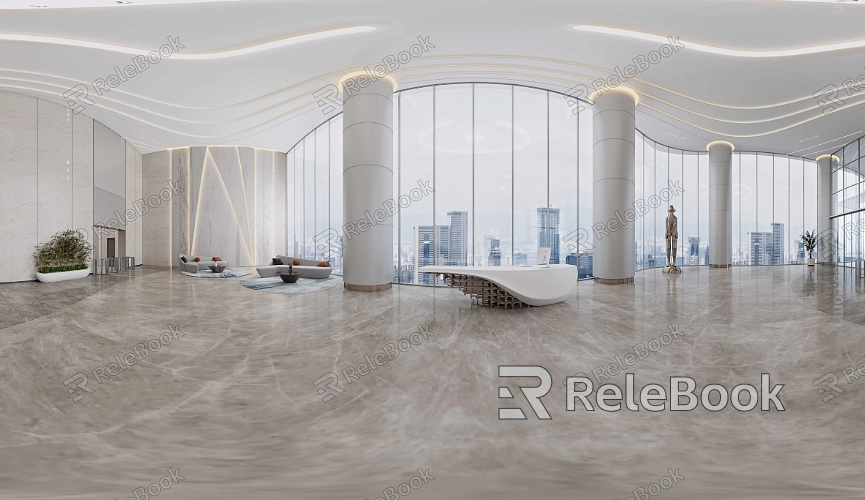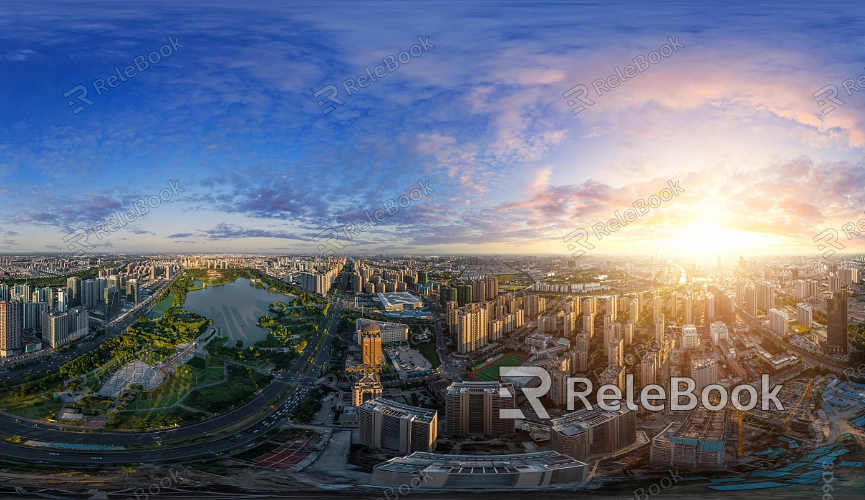Why Is Tone Mapping Needed for HDR Images
HDR images are capable of capturing the brightest and darkest details within a scene, making the final render more lifelike. However, when used directly, HDR images often face display issues because most screens can't fully reproduce the wide range of details that HDR captures. Tone mapping comes into play as a crucial technique that compresses the high dynamic range of HDR images into a displayable range, ensuring that colors and brightness are accurately represented across different devices. This article explores the necessity of tone mapping in HDR images, common usage scenarios, and its application in software like Blender, 3ds Max, and Cinema 4D.

1.Characteristics and Challenges of HDR Images
Advantages of High Dynamic Range: HDR images capture a broad range of brightness within a scene, allowing the final rendered image to appear closer to what the human eye perceives. This is especially beneficial in scenes with stark contrasts in lighting, where HDR can retain more detail in both the brightest and darkest areas.
Limitations of Display Devices: Although HDR images boast a wide dynamic range, traditional display devices like standard monitors and TVs typically cannot fully showcase this range. Using HDR images on these devices without any adjustments can lead to images that are either too bright or too dark, losing important details in the process.
2.Principles and Functions of Tone Mapping
What Is Tone Mapping?: Tone mapping is a technique that compresses the high dynamic range of an HDR image into a range that can be displayed on standard devices. By adjusting the image’s contrast, brightness, and color, tone mapping ensures that HDR images can be accurately viewed on everyday displays while retaining as much detail as possible.
The Core Purpose of Tone Mapping: Beyond making HDR images displayable on standard devices, tone mapping is essential for maintaining visual balance in an image. It ensures that scenes appear natural under various lighting conditions, preserving the intended look and feel.
3.Common Tone Mapping Techniques
Local Tone Mapping: This method adjusts the tone based on localized areas within the image, which helps to preserve more local details. However, it might cause inconsistencies in the overall image appearance. This technique is typically used in scenes where emphasis on specific details, such as close-up shots, is required.
Global Tone Mapping: In contrast, global tone mapping adjusts the entire image uniformly, ensuring overall consistency. While this method maintains visual coherence, it may sacrifice some local details, making it suitable for most general scenarios.

4.Application of Tone Mapping in 3D Software
In Blender: As an open-source 3D software, Blender widely supports the use of HDR images and tone mapping. Designers can utilize Blender’s tone mapping features to fine-tune HDR images, ensuring that the rendered output maintains a realistic visual effect.
In 3ds Max: 3ds Max offers various tone mapping options, allowing designers to adjust the brightness and contrast of images during the rendering process. This ensures that HDR images maintain visual consistency across different render outputs.
In Cinema 4D: Similarly, Cinema 4D supports the use of HDR images and tone mapping. Designers can optimize image output by adjusting tone mapping parameters within the rendering settings, especially for projects requiring high-quality renders.
5.Strategies for Optimizing Tone Mapping
Choosing the Right Tone Mapping Method: Different projects may require different tone mapping techniques. Designers should select either local or global tone mapping based on the project’s needs to ensure the final render meets expectations.
Adjusting Tone Mapping Parameters: In 3D software, designers can fine-tune tone mapping parameters like contrast and brightness to optimize the display of HDR images. Proper parameter settings can help retain details while ensuring the overall visual effect of the image.
Preview and Fine-Tuning: Many 3D software programs offer real-time preview features for tone mapping, allowing designers to make adjustments before final rendering to achieve the best possible results.
6.Impact of Tone Mapping on Projects
Enhancing Image Visibility: Tone mapping allows HDR images to be displayed correctly across different devices, preventing distortion that could arise from device limitations.
Improving Detail Representation: Proper tone mapping preserves crucial details in HDR images, particularly in scenes with strong contrasts, resulting in more vivid and realistic images.
By understanding and applying tone mapping effectively, 3D designers can significantly improve the display quality of HDR images, leading to more realistic and nuanced final renders. For those seeking more resources related to HDR images or high-quality 3D models and design materials, consider exploring Relebook. Relebook offers a wealth of design assets, helping you tackle challenges across various projects and create outstanding works.

